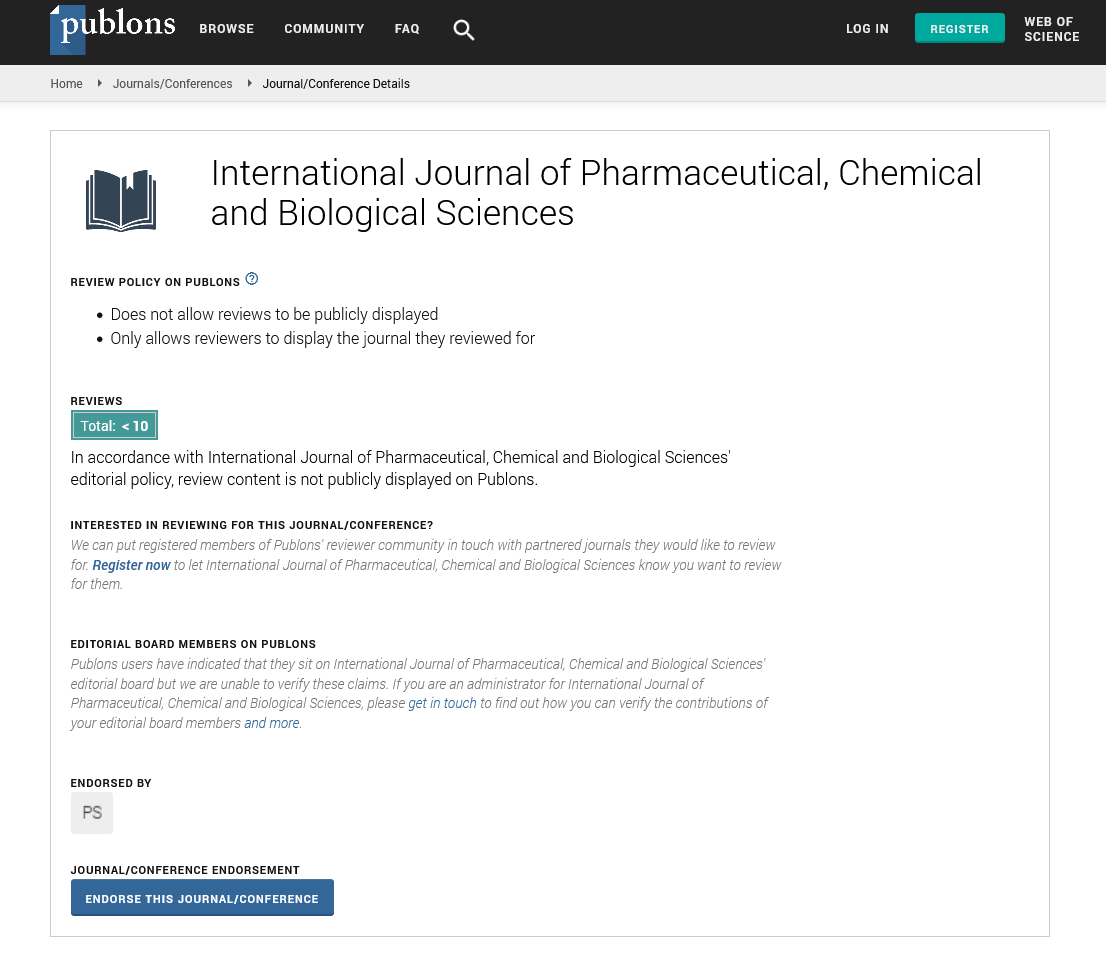Commentary - International Journal of Pharmaceutical, Chemical and Biological Sciences ( 2024) Volume 14, Issue 1
Exploring the Interface: Unveiling the Intricacies of Interfacial Chemistry
Ming Li*Ming Li, Department of Chemistry, Wuhan University, China,
Received: 28-Feb-2024, Manuscript No. ijpcbs-24-131350; Editor assigned: 01-Mar-2024, Pre QC No. ijpcbs-24-131350 (PQ); Reviewed: 15-Mar-2024, QC No. ijpcbs-24-131350; Revised: 20-Mar-2024, Manuscript No. ijpcbs-24-131350 (R); Published: 27-Mar-2024, DOI: DOI: 10.36648/2471-9668-14.1.10
Introduction
At the heart of countless natural phenomena and technological innovations lies the intricate realm of interfacial chemistry-the study of chemical processes occurring at the interfaces between different phases of matter. From the air-water interface in oceans to the solid-liquid interface in batteries, interfacial chemistry governs a myriad of phenomena, ranging from surface tension and catalysis to corrosion and self-assembly. This article embarks on a comprehensive exploration of interfacial chemistry, unraveling its fundamental principles, methodologies, applications, and implications across diverse scientific disciplines and technological domains. Interfacial chemistry delves into the unique properties and behaviors exhibited by molecules and ions at the interfaces between two or more phases of matter, such as gas-liquid, liquid-liquid, liquid-solid, and solid-solid interfaces. Interfacial phenomena arise due to differences in the chemical potentials, surface energies, and molecular arrangements across interfaces, giving rise to distinctive behaviors that often deviate from those observed in bulk phases. Surface tension, a manifestation of intermolecular forces at the interface between a liquid and a gas, determines the energy required to increase the surface area of a liquid.
Description
Surface analysis techniques, such as X-ray Photoelectron Spectroscopy (XPS), Scanning Electron Microscopy (SEM), and Atomic Force Microscopy (AFM), provide insights into the composition, morphology, and topography of surfaces and interfaces at the nanoscale. Electrochemical techniques, including cyclic voltammetry, impedance spectroscopy, and chronoamperometry, enable the study of interfacial processes involving electron transfer and ion transport at electrode-electrolyte interfaces. Langmuir-Blodgett troughs are experimental setups used to study the behavior of amphiphilic molecules at the air-water interface. By compressing monolayers of molecules spread on the surface of water, researchers can investigate surface pressure-area isotherms, film stability, and molecular ordering at the interface. Molecular dynamics simulations, density functional theory calculations, and Monte Carlo simulations provide complementary insights into interfacial phenomena by elucidating molecular interactions, diffusion processes, and phase equilibria at interfaces. Interfacial chemistry finds diverse applications across scientific disciplines and technological domains, driving innovation and addressing societal challenges. Interfacial catalysis exploits the unique properties of catalytic materials and reactants at interfaces to enhance reaction rates, selectivity, and efficiency. Heterogeneous catalysis, where the catalytic reaction occurs at the interface between a solid catalyst and a liquid or gas phase, is widely used in industrial processes, such as petroleum refining, chemical synthesis, and environmental remediation. Interfacial chemistry plays a crucial role in the design, synthesis, and characterization of advanced materials with tailored properties for various applications.
Conclusion
Interfacial chemistry stands at the nexus of fundamental science and technological innovation, offering insights into the behavior of molecules and materials at the interfaces that govern countless natural and engineered systems. From catalysis and materials synthesis to environmental remediation and energy conversion, interfacial chemistry permeates every aspect of modern science and technology, driving discovery and addressing societal challenges. As we continue to unravel the intricacies of interfacial phenomena and harness their potential for innovation, it is essential to adopt a holistic and interdisciplinary approach, integrating knowledge from chemistry, physics, materials science, and engineering to tackle complex problems and pave the way for a sustainable and prosperous future.

